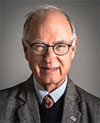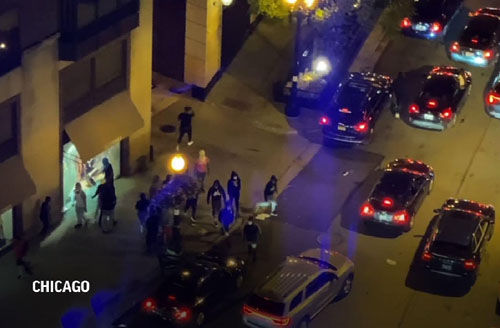Special to WorldTribune.com
 [Editor’s Note: Far East Correspondent Donald Kirk is back in the United States on leave.]
[Editor’s Note: Far East Correspondent Donald Kirk is back in the United States on leave.]
By Donald Kirk
WASHINGTON — The outbreak of protests in cities and even small communities across the U.S. reveals not only the extremes but also the confusion in American life.
While the liberal media focuses on the peaceful aspects of any protest, the violence, the vandalism, the viciousness of some of the attacks on the police are largely downplayed and sometimes ignored.

The U.S. is such a huge country, with widely varying interests and beliefs, that it is difficult to impose a single definable set of values and standards of conduct, but the clear impression emerges of an elitist class that’s largely unaffected by the violence against a middle and working-class that looks on it with fear and revulsion.
The academicians and journalists who love to express boundless sympathy with “peaceful protesters” confronted by bullying policemen and federal agents are not likely to worry about injury to themselves or their property.
It’s easy to say the protesters have a right to demonstrate, but it’s just as easy to forget that most of the protests wind up in acts of mayhem that are anything but peaceful. Many of the protesters may be non-violent, not in favor of throwing firecrackers at policemen, much less attacking them on occasion, but trouble-makers among them have no problem exploiting the opportunity to show their abhorrence of the police and the “system” against which they are rebelling.
It’s also easy to blame much of the unrest on Black Lives Matter, the slogan for the movement that gives voice and influence to the descendants of slaves who feel they all too often are the targets of police violence and prejudice on all levels. It’s commonplace now to talk about “systemic racism,” an umbrella term that suggests the racism that pervades the entire way of life in the U.S. That’s probably true when one looks at all the forms that racism assumes in just about any professional or academic or social setting.
While racial prejudice exists everywhere, increasingly the organizers of protests in American communities often appear to exploit the Black Lives Matter movement as an easy excuse for acts of defiance that have nothing to do with the Blacks for whom they claim to be fighting. They simply want the destruction of an order that they see as oppressive, reactionary, antiquated and vulnerable to attack. They show no concern with rising crime rates in American cities, including Washington, D.C. where more than 20 people were wounded, and one killed, in a wild gunfight over the weekend that had nothing to do with Black Lives Matter.
Reaction against political protest, and the violence that goes with it, is slowly but steadily rising. The latest outbreak in Chicago against fashionable shops and stores along Chicago’s “miracle mile” was a shocking display of destructive counter-culture vandalism. In one town in Colorado, the counter-demonstration proved to be stronger than the demonstration. The protesters, unable to break through a solid wall of townspeople, supported by local police, had to leave town.
Nationwide, protests may have quite the opposite effect from that intended by their leaders. The response of millions of Americans may be disgust with what they are seeing on television screens. Far from building up support for their opposition to established authority, they may be driving millions of people in the opposite direction. President Donald Trump may benefit from the reaction to violence in the upcoming presidential election.
Many of those most opposed to leftist-led protest are evangelical Christians among whom Trump has built up tremendous appeal over the years even though he himself, in his personal life, hardly showed Christian values of morality or fidelity. Yet this following loves him all the more because he is not a member of the eastern intellectual establishment that loathes him. Although from New York City and educated at an Ivy League university, he still represents the hopes of working men and women, of small business owners, fighting for survival in the midst of the COVID-19 pandemic.
The impression is that the violent demonstrations, the assaults on authority, as seen in the police, will eventually die down. The U.S. is not about to experience a second Civil War or American revolution. Some things, however, may change. The names of military bases named for generals in the confederate army of the southern states that rebelled against the union will be replaced by those of American heroes in wars fought overseas. Some statues of confederate leaders, notably Robert E. Lee, the confederate general who surrendered to the victorious General Ulysses S. Grant, have been torn down..
On a deeper level, though, how much difference has the wave of violence sweeping American cities really had? In some cities, eg. New York and Chicago and Seattle, violent non-political crime has increased. Calls to “defund the police,” leaving police departments without badly needed resources, may boomerang into demands for more police to maintain law and order.
The U.S. is undergoing a period of change, the result of which may be to undermine established values or perhaps, in the end, to strengthen them. COVID-19 complicates matters. No one can be sure whether the final result will be to make the U.S. a stronger or weaker nation.the final result will be to make the U.S. a stronger or weaker nation.
